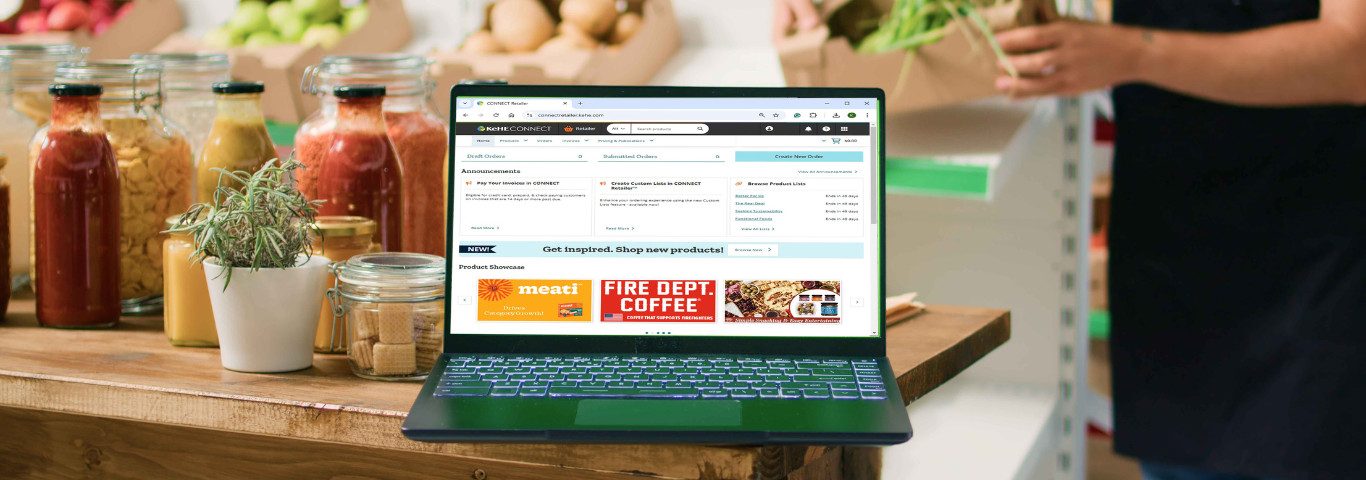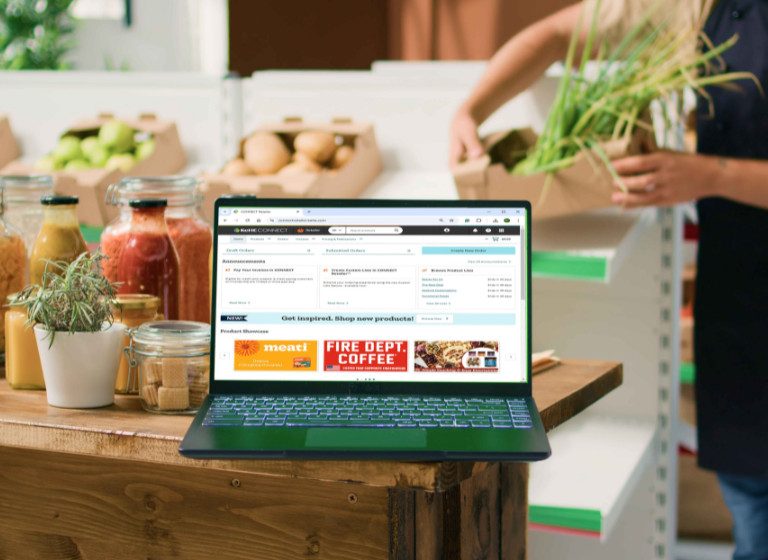

Unexpected Areas of Discovery: Reaching Modern Shoppers in an Omni-Channel World
The generational divide in shopping preferences has created a duality in the grocery industry. Retailers must pay attention to both sets of needs: a younger generation that values the speed and convenience of online shopping and an older generation that relies on the sensory experience and immediacy of physical stores.
Discover how retailers and brands can bridge the consumer demand gap to tap into unexpected areas of discovery — one of KeHE’s 2025 Macro Trends — and attract customers of all ages.
Multi-Channel Shopping
The grocery industry, perhaps more than any other, feels the impact of consumers increasingly expecting the ability to move fluidly between online and in-store experiences. This shift is shaped mainly by generational preferences, which determine how and where people shop. Younger generations — particularly Gen Z and Millennials — gravitate toward the convenience of online shopping, often making it a staple of their everyday routines. In contrast, Baby Boomers prefer traditional brick-and-mortar shopping, while Generation X shows a more balanced preference with a combination of in-store (44%) and online shopping.
A recent report shows that the online grocery segment is projected to grow at a rate of 8.9% over the next five years, far outpacing the 1.7% growth rate of in-store visits. This rapid digital growth is driven in part by a generational divide, fueling demand for multi-channel shopping experiences. Retailers are responding by blending online and in-store strategies to meet the diverse expectations of their customer base. Notably, multi-channel shoppers — those who engage with both digital and physical retail — exhibit significantly greater spending power, spending three to four times more than consumers who shop exclusively in-store. Still, the importance of physical stores remains strong as 86% of consumers of all ages still prefer to purchase fresh produce, meat, and other perishables in person, highlighting the continued relevance of the in-store experience despite the rise of digital channels.
Food and Drinks in Social Media
Social media has reshaped the marketing landscape, opening dynamic new pathways for consumers to discover and purchase everything from cutting-edge food and functional beverages to beauty and health care products. Among U.S. adults who follow influencers, 48% engage with food and drink content, making it the second most followed category behind entertainment.
This digital influence has fueled the rise of celebrity and brand collaborations as a go-to strategy in the food and beverage space. When executed well, they spark media attention, develop cultural trends, and create exclusive or limited-time products that can tap into consumer emotions, whether it’s nostalgia, curiosity, or excitement.
Instagram and TikTok are platforms that inspire and inform consumers. Many food products become popular on these platforms, especially when they are associated with an influencer or celebrity. One prime example is Erewhon, which collaborates with high-profile celebrities like Hailey Bieber or Kourtney Kardashian to release limited-time smoothies. These strategic product partnerships not only appeal to a broad, multi-generational audience, but they also reinforce the brand’s high-luxury image.
With more than one in four shoppers frequently making impulse purchases, the opportunity to convert engagement into action is substantial. Campaigns that leverage limited-edition drops, nostalgic branding, or high-profile influencer tie-ins are proving especially effective at capturing attention and prompting spontaneous buys in the scrollable, split-second world of social media.
Engaging In-Store Experiences
While marketing strategies demonstrate the significance of digital media and online shopping in reaching today’s consumers, in-store experiences still play a vital role in shaping their shopping decisions. Nearly half of consumers (48%) value in-person interactions, and 70% prefer to learn more about a product before purchasing. To that point, impulse in-store purchases consistently outperform social media and traditional ads, with 40% of Gen Z and 49% of Baby Boomers saying it directly influences their interest in a product. Engaging in-store experiences are essential to exciting customers and encouraging them to try new, innovative products.
Offering in-store and online shopping experiences allows retailers to reach consumers across all generations, as shoppers today tend to mix and match the channels from which they purchase products. Without embracing a full omnichannel approach, retailers risk losing customers to competitors already meeting consumers with a wide range of shopping options. However, as generations continue to evolve, so will the trends they follow. To remain competitive in a constantly evolving industry, retailers must stay nimble and informed or risk falling behind.
Learn about other 2025 Macro Trends driving consumer shopping habits here and shop on KeHE CONNECT Retailer®.
